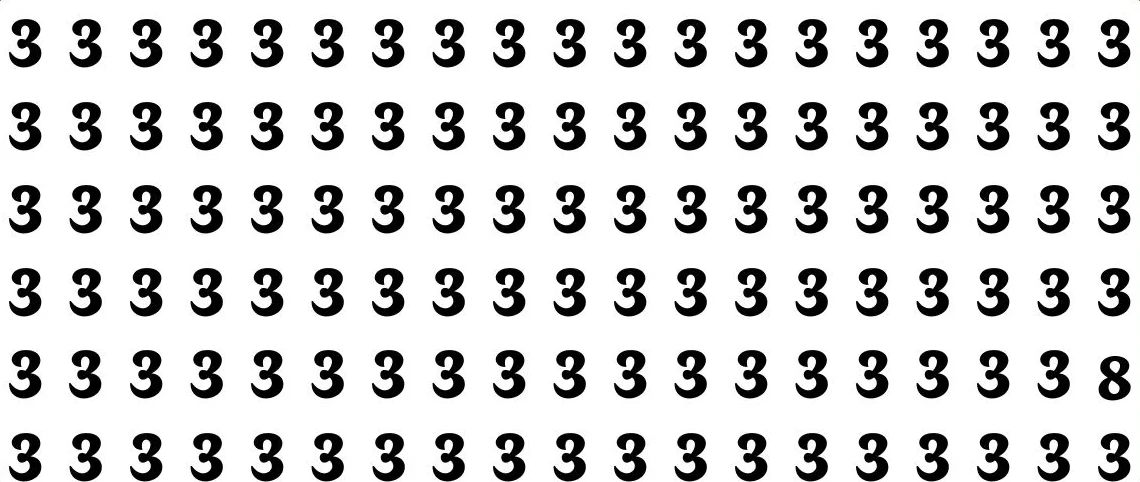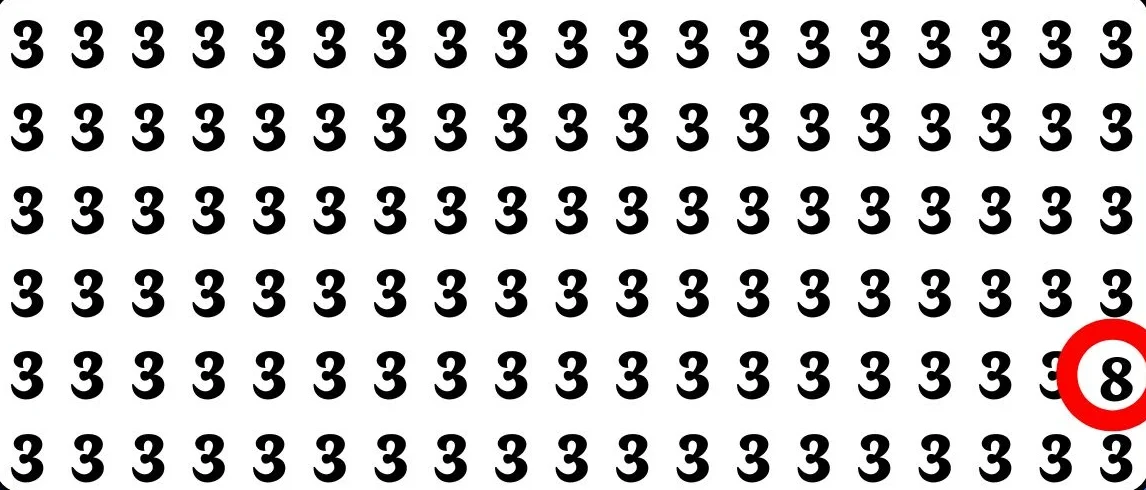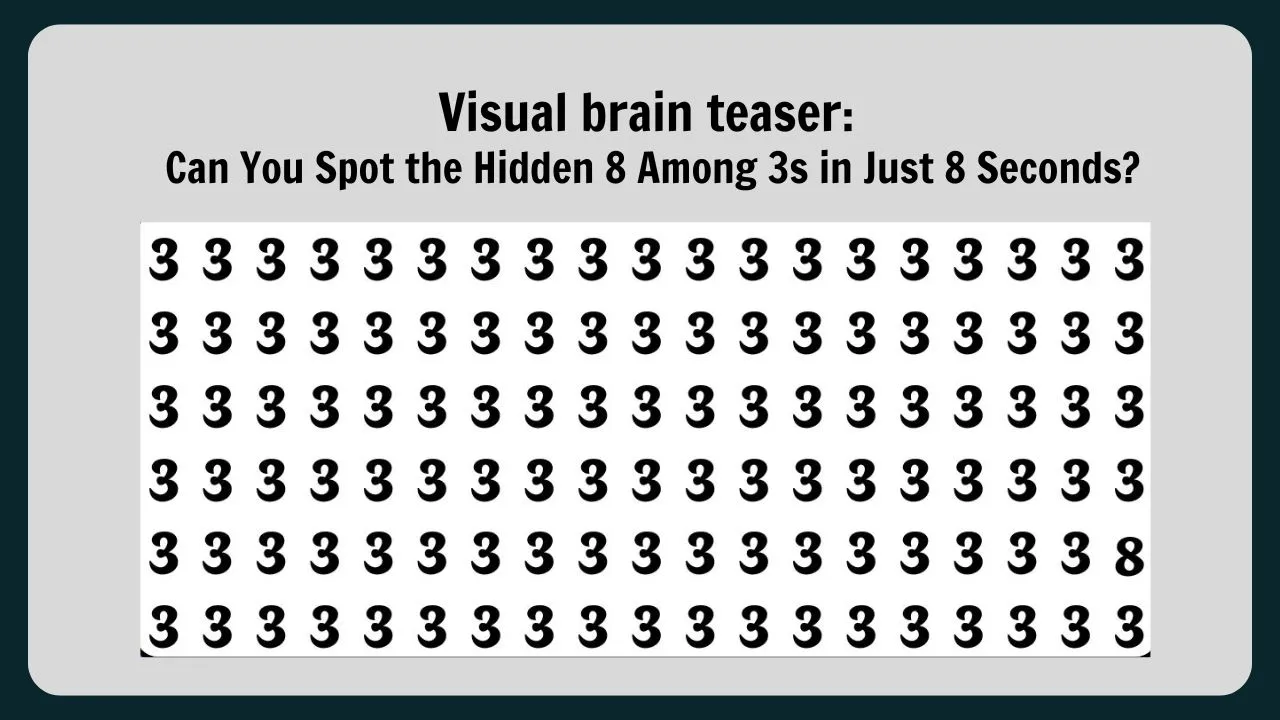Our brains are fascinatingly challenged by optical illusions, which may transform the seemingly easy into something very complex. The “Find the Number 8 Among 3s” challenge, an eye test intended to assess your ability to observe, be patient, and have a sharp mind, is one of the most recent viral brainteasers sweeping social media. The twist? You have eight seconds to identify the number eight that is concealed among several threes.
Doesn’t that sound simple? Rethink your thought.
Why It’s Such a Difficult Optical Illusion
Rows upon rows of the number three make this puzzle appear to be a sea of the same number at first glance. However, there is one digit—the number 8—hidden somewhere in that grid that shouldn’t be there. Although the distinction between a 3 and an 8 may appear to be clear, their arrangement makes it quite challenging to notice at a glance.
Visual resemblance is what makes this illusion so difficult. The numerals 3 and 8 are both made up of curves and loops, and our brain starts to recognize them as being the same when they are arranged closely together. Even though there is an anomaly in plain sight, this visual clutter fools our eyes into believing there aren’t any.
How Such Optical Illusions Operate
Patterns appeal to our brains. They are actually programmed to identify them as a means of rapidly evaluating data. By upsetting these patterns, optical illusions lead our minds to interpret what we see incorrectly. The overwhelming prominence of the number three in this illusion causes your brain to cease searching for variations.

Your mind must completely change focus the instant you realize you need to discover an eight, searching for a shape that is similar to but not exactly the others. The job is made much more competitive and difficult by the 8-second time constraint, which only serves to increase mental strain.
Optical illusions’ advantages for the brain
These tasks are beneficial to your brain in addition to being enjoyable. This type of puzzle has been shown to enhance visual perception, focus, attention to detail, and cognitive speed. They are an excellent mental exercise since they activate both hemispheres of the brain.
Regular practice of visual exams and brainteasers frequently results in better memory and problem-solving skills.
Have You Seen the 8?
Congratulations if you were able to identify the number 8 in only eight seconds! You’re quite good at processing visual information and have a keen eye. If not, don’t be alarmed; these illusions are meant to be difficult. Sometimes it only takes a second or third glance from someone who isn’t familiar with it.
Would you want a tip? To find small variations in the loop patterns, try scanning the image row by row. For example, 8s have two closed loops, but 3s have just one. This minor detail has the power to change everything.

An entertaining and efficient method to test your cognitive abilities in a matter of seconds is the “Find the 8 Among 3s” optical illusion. It tests your perception, improves your attention to detail, and provides a fun and useful little brain workout. You’ve just given your brain a good workout, whether or not you were able to solve it. Your mind will appreciate it if you continue to play.


I did it within one second
Great Job Gordon . Try another puzzle